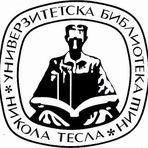Title
Eksperimentalno i numeričko istraživanje razmene toplotne mase u ložištu apsorpcione toplotne pumpe na biomasu
Creator
Ilić, Marko, 1984-
CONOR:
68080649
Copyright date
2023
Object Links
Select license
Autorstvo-Nekomercijalno-Bez prerade 3.0 Srbija (CC BY-NC-ND 3.0)
License description
Dozvoljavate samo preuzimanje i distribuciju dela, ako/dok se pravilno naznačava ime autora, bez ikakvih promena dela i bez prava komercijalnog korišćenja dela. Ova licenca je najstroža CC licenca. Osnovni opis Licence: http://creativecommons.org/licenses/by-nc-nd/3.0/rs/deed.sr_LATN. Sadržaj ugovora u celini: http://creativecommons.org/licenses/by-nc-nd/3.0/rs/legalcode.sr-Latn
Language
Serbian
Cobiss-ID
Theses Type
Doktorska disertacija
description
Datum odbrane: 20.6.2024.
Other responsibilities
Academic Expertise
Tehničko-tehnološke nauke
University
Univerzitet u Nišu
Faculty
Mašinski fakultet
Group
Katedra za termotehniku, termoenergetiku i procesnu tehniku
Alternative title
Experimental and numerical investigaton of thermal and fluid flow process in biomass generator of absorption heat pump
Publisher
[M. N. Ilić]
Format
IV, [183] list.
description
Biografija autora: [183] list
Bibliografija: list. 159-164
description
Thermodynamics, Heat and Mass transfer
Abstract (en)
In this doctoral dissertation, an experimental and numerical investigation of
thermo-fluid processes in a hot air generator (GVV) within the absorption heat
pump (AHP) system has been conducted. The working medium in this system
is a mixture of ammonia and water. In the first phase, the substitution of
gaseous fuel with solid fuel (biomass pellets) was successfully carried out, and
modifications were made to the heat pump to connect it to the GVV. The goal
was to optimize the geometry of the pellet stove combustion chamber, with
significant assistance from companies (Megal and "AirCool") that produced
and donated the stove. The stove was adapted into the GVV for AHP purposes.
Inside the generator, a finned heat exchanger was added to enhance the heat
exchange process.
The experimental research was conducted in the Laboratory for
Thermotechni cast the Fauclty of Mechaniacl Engineering in Niš. Multiple
different operating modes were investigated in the experimental part. The GVV
exhibits complex turbulent flow, with combustion products flowing through
the heat exchanger tubes in three passes. Air flows around both finned and nonfinned
heat exchanger tube bundles, getting heated to the required temperatures
for the operation of the heat pump absorber. Measurements included fluid
flows, temperatures of working fluids at the inlet and outlet of the system, as
well as temperatures at defined locations within the generator.
A mathematical model of heat and mass exchange was established, vital for
conducting the numerical experiment in this work. Model validation was
performed by comparing measured and calculated thermo-fluid quantities at
selected locations in the GVV.
Abstract: Considering the good agreement between experimental and numerical results,
the model can be utilized for numerical simulations in similar heat exchange
scenarios. In the numerical research section, software packages ANSYS and
CFX were used.
Towards the end of the study, thermal characteristics of the AHP system were
determined, primarily focusing on exchanged heat fluxes and heating and
cooling coefficients. These characteristics were analyzed in relation to the
temperature of hot air entering the desorber of the AHP.
Authors Key words
apsorpcione toplotne pumpe, generator, 3D simulacije,
biomasa-pelet, obnovljivi izvori energije, poligeneracija,
eksperimentalno istraživanje
Authors Key words
Absorption heat pump, Generator, 3D Simulations, Biomass-pellet,
Renewable energy sources, Polygeneration, Experimental investigation
Classification
536.242:[621.577:662.639(043.3)
Subject
Т200
Type
Tekst
Abstract (en)
In this doctoral dissertation, an experimental and numerical investigation of
thermo-fluid processes in a hot air generator (GVV) within the absorption heat
pump (AHP) system has been conducted. The working medium in this system
is a mixture of ammonia and water. In the first phase, the substitution of
gaseous fuel with solid fuel (biomass pellets) was successfully carried out, and
modifications were made to the heat pump to connect it to the GVV. The goal
was to optimize the geometry of the pellet stove combustion chamber, with
significant assistance from companies (Megal and "AirCool") that produced
and donated the stove. The stove was adapted into the GVV for AHP purposes.
Inside the generator, a finned heat exchanger was added to enhance the heat
exchange process.
The experimental research was conducted in the Laboratory for
Thermotechni cast the Fauclty of Mechaniacl Engineering in Niš. Multiple
different operating modes were investigated in the experimental part. The GVV
exhibits complex turbulent flow, with combustion products flowing through
the heat exchanger tubes in three passes. Air flows around both finned and nonfinned
heat exchanger tube bundles, getting heated to the required temperatures
for the operation of the heat pump absorber. Measurements included fluid
flows, temperatures of working fluids at the inlet and outlet of the system, as
well as temperatures at defined locations within the generator.
A mathematical model of heat and mass exchange was established, vital for
conducting the numerical experiment in this work. Model validation was
performed by comparing measured and calculated thermo-fluid quantities at
selected locations in the GVV.
Abstract: Considering the good agreement between experimental and numerical results,
the model can be utilized for numerical simulations in similar heat exchange
scenarios. In the numerical research section, software packages ANSYS and
CFX were used.
Towards the end of the study, thermal characteristics of the AHP system were
determined, primarily focusing on exchanged heat fluxes and heating and
cooling coefficients. These characteristics were analyzed in relation to the
temperature of hot air entering the desorber of the AHP.
“Data exchange” service offers individual users metadata transfer in several different formats. Citation formats are offered for transfers in texts as for the transfer into internet pages. Citation formats include permanent links that guarantee access to cited sources. For use are commonly structured metadata schemes : Dublin Core xml and ETUB-MS xml, local adaptation of international ETD-MS scheme intended for use in academic documents.


